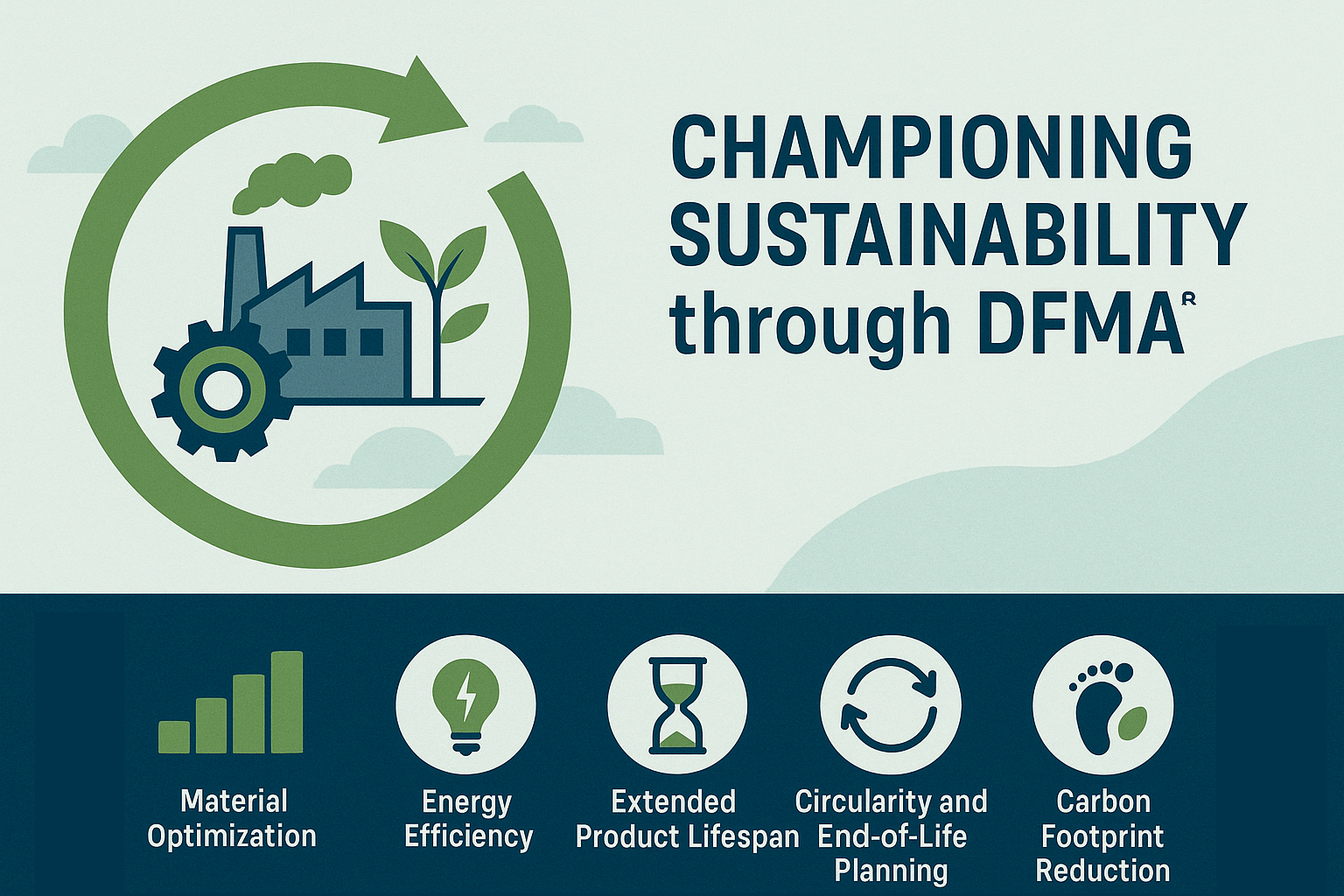Championing Sustainability through DFMA
In today’s rapidly evolving manufacturing landscape, sustainability is no longer an optional add-on—it’s a core business imperative. While Design for Manufacture and Assembly (DFMA) is widely celebrated for driving cost reductions, its critical role in enabling sustainable, eco-friendly production often goes underappreciated. This article explores how DFMA principles not only streamline manufacturing but also deliver measurable environmental benefits, positioning companies for long-term success in a greener economy.
The DFMA Philosophy: Efficiency Meets Ecology
At its heart, DFMA promotes simplicity, standardization, and the elimination of unnecessary complexity in product design. When viewed through a sustainability lens, these principles translate directly into:
- Waste Reduction: Fewer parts and simpler assemblies mean less scrap material and fewer off-cuts.
- Resource Conservation: Optimized designs minimize raw material usage without compromising performance.
- Energy Savings: Streamlined processes require less machine time and lower overall energy consumption.
Five Pillars of DFMA-Driven Sustainability

- Material Optimization
What It Means: Designing parts to use the minimum necessary volume of material, favoring high-strength or recycled alloys where feasible.
Impact: Recent DFMA implementations have shown up to a 30% reduction in raw material consumption for metal components. - Energy Efficiency
What It Means: Simplifying toolpaths, reducing assembly steps, and choosing processes with lower energy intensity (e.g., cold forming vs. machining).
Impact: Companies report 15–25% lower energy usage on the shop floor after retooling designs according to DFMA guidelines. - Extended Product Lifespan
What It Means: Designing for robustness and ease of maintenance, which discourages premature disposal.
Impact: Durable products that remain in service longer reduce the frequency of replacements—mitigating overall lifecycle environmental impacts. - Circularity and End-of-Life Planning
What It Means: Engineering assemblies for straightforward disassembly, facilitating repair, remanufacture, and recycling.
Impact: Products designed with disassembly in mind can achieve up to 80% recyclability, keeping valuable materials in circulation. - Carbon Footprint Reduction
What It Means: Consolidating suppliers, minimizing shipping distances, and reducing overall logistics complexity.
Impact: Simplified supply chains driven by DFMA lead to a 10–20% decrease in transportation-related emissions.
Real-World Success Stories
- Automotive Component Case: A leading OEM applied DFMA to redesign a structural bracket, cutting its part count by 40% and material volume by 25%. The change not only shaved production costs but also reduced CO₂ emissions by an estimated 2 kg per part over its lifecycle.
- Consumer Electronics Example: By consolidating multiple stamped and molded parts into a single hybrid component, a major electronics manufacturer reduced assembly time by 35% and improved end-of-life recyclability by streamlining disassembly.
Embedding DFMA in Your Sustainability Roadmap
- Cross-Functional Collaboration: Bring together design engineers, manufacturing planners, and sustainability specialists early in the development cycle.
- Set Clear KPIs: Track metrics like material usage per unit, energy consumption per batch, and percentage of recyclable content.
- Leverage Digital Tools: Integrate DFMA software with life-cycle analysis (LCA) platforms to quantify environmental impacts at the design stage.
- Pilot and Scale: Start with high-value or high-volume products to validate DFMA-driven sustainability gains before broader roll-out.
- Continuous Improvement: Use feedback from production and after-market data to refine designs and processes iteratively.
Aligning with Market and Regulatory Drivers
As global regulations tighten—through initiatives like the EU EcoDesign Directive and extended producer responsibility (EPR) laws—organizations that master DFMA-enabled sustainability will gain a competitive edge. Moreover, today’s consumers reward brands demonstrating authentic environmental stewardship, turning DFMA into both a compliance tool and a market differentiator.
Conclusion & Next Steps
DFMA offers a proven, systematic approach to bridging cost efficiency and environmental responsibility. By embedding its principles throughout the product lifecycle—from conceptual design to end-of-life—you can:
- Slash resource consumption
- Lower carbon footprints
- Enhance product durability
- Streamline supply chains
Ready to champion sustainability in your organization? Contact our DFMA Experts to discover how to integrate green design principles into your next project and drive both environmental and economic value.





